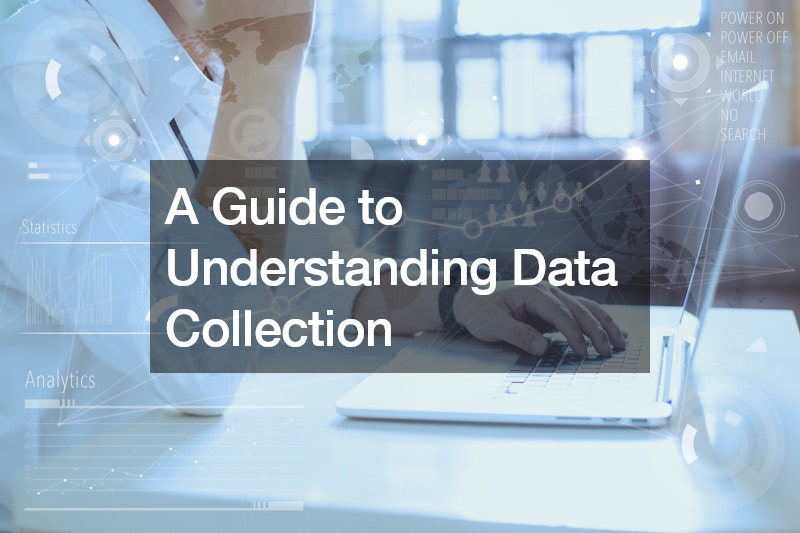

In today’s data-driven world, the ability to collect, analyze, and interpret data is invaluable across all sectors and industries. Data collection is a fundamental step in the process of gathering accurate information necessary for making informed decisions, understanding trends, and forecasting future needs. This guide explores various aspects of data collection, helping readers understand its importance, the types of data, and the challenges involved in the process.
What is Data Collection?
Data collection is the systematic approach to gathering and measuring information from a variety of sources to get a complete and accurate picture of an area of interest. Data can be collected from various sources using multiple techniques, which can then be analyzed to derive insights that are actionable and relevant.
Effective data collection is critical because it underpins informed decision-making, in policy development, business management, science, and everyday problem-solving.
Types of Data in Data Collection
Data collected can generally be classified into two main categories: quantitative and qualitative data. Each type serves a specific purpose and requires different methods and techniques for collection and analysis.
- Quantitative Data: This type of data is numerical and can be measured and expressed using numbers. Quantitative data is further divided into two subcategories:
- Continuous Data: This can take any value within a given range and can be measured to finer scales. Examples include height, time, and temperature. It is often visualized using histograms or line graphs.
- Discrete Data: This type of data can only take certain values, typically integer values, and is countable. Examples include the number of students in a class, the number of cars in a parking lot, etc.
- Qualitative Data: This type of data is descriptive and conceptual. It can be categorized based on traits and characteristics.
- Ordinal Data: Although this can be considered under quantitative types, it often represents qualitative aspects because it relates to data that can be ranked or ordered but not measured, like survey responses ranging from “very satisfied” to “not satisfied.”
- Nominal Data: This includes data categorized without a natural order or ranking, such as types of cuisine or genres of music.
Importance of Effective Data Collection
Effective data collection is crucial because it provides the raw material needed to produce useful information. From a business perspective, data collection helps companies understand market trends, customer behavior, and productivity; thus, guiding strategic planning and decision-making. In scientific research, collecting data is essential to validate experiments and theories. Accurate data collection is also essential to maintain the integrity of research, allowing for correct decision-making and forecasting.
Challenges in Data Collection
While data collection is pivotal, it is not without challenges. The main issues often relate to the volume, variety, and velocity of data being generated. Here are a few challenges commonly encountered:
- Accuracy: Ensuring the data collected is accurate and reliable is paramount. Inaccurate data can lead to faulty insights and poor decision-making.
- Resources: Significant resources are often required to collect, store, and manage data. This includes both technological resources like data collection software and human resources for data management and analysis.
- Privacy: With increasing regulation like GDPR, ensuring the privacy and security of the data collected, especially personal data, is more challenging and essential than ever.
Utilizing Technology in Data Collection
Modern technology, particularly data collection software, plays a crucial role in streamlining the data collection process. This software can automate the collection and storage of data, ensure the accuracy and consistency of the data collected, and enable easy access and sharing of data across various platforms. With tools like online surveys, mobile data collection apps, and automated sensors, collecting large volumes of data has become more manageable and less error-prone.
Data collection is crucial for businesses as it directly impacts their ability to make informed decisions, understand market trends, and identify customer preferences. By gathering data on customer behavior, purchase patterns, and market conditions, businesses can tailor their products and services to better meet the needs of their target audience. This proactive approach not only enhances customer satisfaction but also boosts sales and profitability. Moreover, data collection enables businesses to optimize their operations, reduce costs, and improve efficiency by identifying bottlenecks and areas for improvement. Ultimately, robust data collection practices empower businesses to stay competitive in rapidly changing markets by adapting their strategies based on concrete data-driven insights.
Conclusion
Understanding data collection in its various forms and complexities is fundamental for any professional involved in data-driven decision-making. By recognizing the types of data, appreciating the importance of accurate data collection, acknowledging the challenges, and effectively utilizing technology such as data collection software, professionals can ensure that the data they gather will provide valuable insights and guide informed decisions.
.
